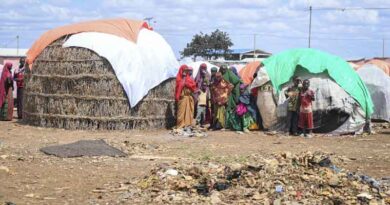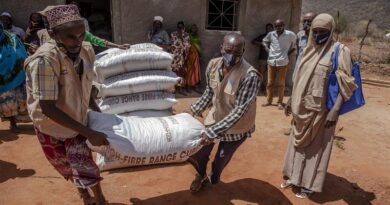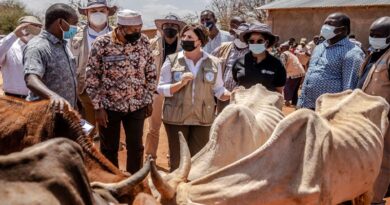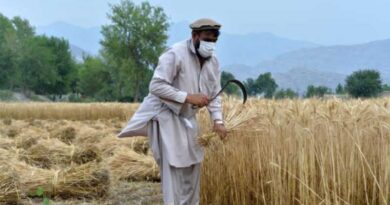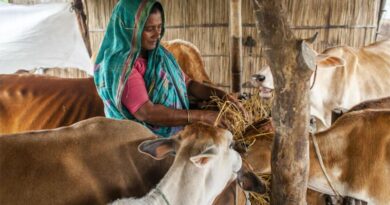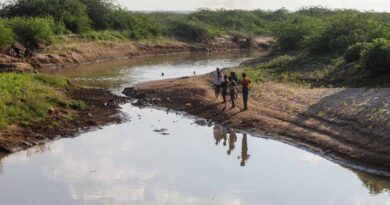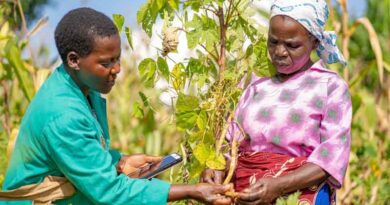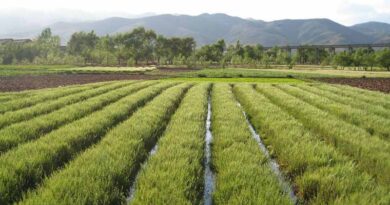El Niño: FAO’s updated Anticipatory Action and Response Plan urgently requires $160 million to support over 4.8 million people through March 2024
10 November 2023, Rome: Amid the looming threat of El Niño expected to severely affect millions of people, the Food and Agriculture Organization of the United Nations (FAO) has launched an updated Anticipatory Action and Response Plan to reduce the projected impacts of this climate phenomenon on agricultural livelihoods and food security of the most at-risk and vulnerable populations.
According to the Plan, FAO urgently requires nearly $160 million to deliver support to over 4.8 million people through March 2024.
The Plan currently prioritizes actions in 34 countries across Eastern and Southern Africa, Asia and the Pacific and Latin America and the Caribbean which were identified based on an assessment of historical impacts of El Niño and other key factors, such as the latest seasonal climate forecasts, agricultural seasonality and current vulnerabilities.
In Eastern Africa, for example, El Niño is associated with above-average rains during the October-December rainy season which may result in heavy rainfall episodes, flooding and landslides especially in eastern Ethiopia, Kenya, Somalia and southern Uganda. In Southern Africa and parts of South and Central America, El Niño usually brings rainfall deficits that can cause significant negative effects on agricultural production and food security. Whereas across Asia and the Pacific, El Niño has contrasting impacts: it can bring too much or too little rain depending on the location.
Dire consequences
The world enters this El Niño cycle with a record 258 million people experiencing acute hunger in 2022 and only 20 percent of the total funds required to cope with the high levels of acute food insecurity. Many countries facing humanitarian crises also risk being affected by El Niño impacts in the coming weeks and months.
By disrupting rainfall and temperature patterns, the impact of the upcoming El Niño events on agriculture and food security can be severe and cause significant human suffering and economic loss. For example, the 2015-2016 El Niño episode severely affected over 60 million people worldwide, causing 23 countries to appeal for international humanitarian assistance totalling $5 billion.
Scaling up anticipatory actions
Farmers, pastoralists, fishers and other small-scale producers bear the most direct and immediate impacts of climate shocks. Effective anticipatory action must therefore concentrate on preventing damage and loss to crops, livestock, productive lands, water and infrastructure to protect food at its source.
This not only safeguards local food supply but also mitigates wider effects on communities, local economies and humanitarian aid requirements. FAO studies show that every $1 invested in anticipatory action can create a return for farming families of more than $7 in avoided losses and added benefits.
FAO started implementing anticipatory actions for this El Niño episode in the first half of 2023. In Somalia, for example, repairing around 4,600 metres of riverbank breakage points along the Shabelle river will protect almost 40,000 hectares of cropland from expected floods.
Likewise, timely distribution of drought-tolerant and short-cycle crop seeds in Central America has helped each family receiving assistance to produce about 60 kg of vegetables every two months, to mitigate the impact of El Niño-induced drought on local food production. This will reduce the likelihood of families resorting to negative coping mechanisms, such as selling assets or skipping meals.
Key objectives
FAO’s updated Plan covers two critical time windows: (i) acting ahead of El Niño shocks to prevent their impacts and (ii) delivering first responses where devastation from El Niño could not be avoided.
It focuses on three key objectives:
- Mitigate El Niño disaster impacts through anticipatory actions, such as helping fishers protect their boats ahead of storms, reinforcing river embankments ahead of floods, distributing drought-tolerant seeds to rainfed farmers and protecting livestock health.
- Capitalize on the positive spillover effects of El Niño and offset losses, for example by supplying seeds to flood-affected farmers so they can plant and regain a harvest as flood waters recede.
- Deliver early response where El Niño causes devastation, including through prepositioning the most time-sensitive supplies such as veterinary medicines, seeds and water bladders, while providing cash to severely affected families to meet their most immediate needs.
Some of the most urgent activities in this Plan require funding as soon as possible, including to get the right seed varieties to farmers to secure a crop despite the odds of drought or flood conditions.
Funding gaps
“Funds are needed most immediately to carry out anticipatory actions at scale and in time,” said Rein Paulsen, Director of the FAO Office of Emergencies and Resilience. “With the latest predictions pointing to a greater than 80 percent chance of El Niño continuing through March-May 2024, it is paramount to strengthen agrifood systems to be more resilient to the upcoming climate shocks to prevent loss of lives and livelihoods.”
As of 30 October 2023, FAO has mobilized $35 million leaving a gap of $125 million. With that, the UN agency has already initiated anticipatory actions in 19 prioritized countries and reached 700,000 people thanks to flexible funding from resource partners such as Belgium, Canada, the Directorate-General for Humanitarian Aid and Civil Protection of the European Union, Germany, Norway, Sweden and the United Kingdom of Great Britain and Northern Ireland.
In other countries, FAO has advanced preparations in place, that involve local partners and suppliers of goods, to ensure activities can start quickly once new triggers are reached.
The 34 countries covered by the plan are: Afghanistan, Angola, Bolivia, Cambodia, Colombia, Ecuador, El Salvador, Eswatini, Ethiopia, Fiji, Guatemala, Honduras, Indonesia, Kenya, Lao People’s Democratic Republic, Lesotho, Madagascar, Malawi, Mozambique, Myanmar, Namibia, Nicaragua, Pakistan, Papua New Guinea, Peru, Philippines, Rwanda, Somalia, Timor-Leste, Uganda, Viet Nam, Zambia, Zimbabwe and Venezuela.
Also Read: Hidden costs of global agrifood systems worth at least $10 trillion
(For Latest Agriculture News & Updates, follow Krishak Jagat on Google News)


